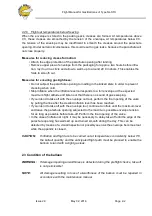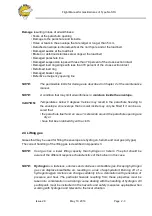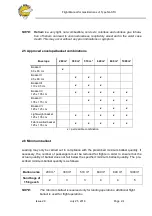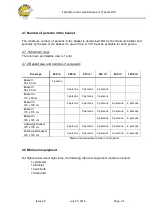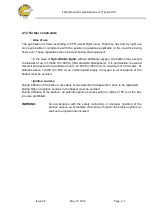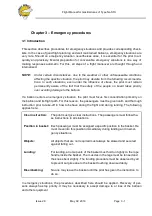
Flight Manual for Gas Balloons of Type NL-STU
Issue 2.0
July 25, 2016
Page VI
Page
3.9
Sudden loss of lifting gas ...............................................................................3-7
3.10
Non-standard landings ...................................................................................3-7
3.10.1
Hard landing .................................................................................3-7
3.10.2
Landing in woodland .....................................................................3-8
3.10.3
Landing on water ..........................................................................3-9
Chapter 4 – Standard operating procedures
4.1
Introduction ....................................................................................................4-1
4.2
Weather
........................................................................................................4-1
4.3
Preflight checks
.......................................................................................4-1
4.4
Preparing for inflation .....................................................................................4-2
4.4.1
Take-off site ..................................................................................4-2
4.4.2
Preparing the balloon up to the start of inflation ............................4-2
4.4.2.1 Laying out the envelope ..................................................4-3
4.4.2.2 Toggle-fastening the load ring .........................................4-3
4.4.2.3 Ballast bags ....................................................................4-5
4.4.2.4 Preparing the envelope ...................................................4-5
4.4.2.5 Inflation method for envelope held down with sand bags 4-6
4.4.3
Attaching the inflation tube ...........................................................4-7
4.5
Inflating with lifting gas ...................................................................................4-8
4.6
Making the ropes ready ...............................................................................4-10
4.7
Flight ballast ................................................................................................4-11
4.8
Preparing for take-off .....................................................................................4-12
4.8.1
Checking the weather situation ...................................................4-12
4.8.2
Checking the equipment .............................................................4-12
4.8.3
Instructing the passengers ..........................................................4-12
4.8.4
Opening the appendix ................................................................4-13
4.8.5
Trial pull of the parachute ...........................................................4-13
4.9
Take-off
......................................................................................................4-13
4.10
Flight
......................................................................................................4-13
4.10.1
Checking the ropes ....................................................................4-14
4.10.2
Venting the lifting gas .................................................................4-14
4.10.3
Observing the variometer ...........................................................4-14
4.10.4
Dropping ballast .........................................................................4-14
4.11
Landing
......................................................................................................4-15
4.11.1
Orienting the basket ...................................................................4-16
4.11.2
Touch-down ...............................................................................4-16
4.12
Deflating the envelope .................................................................................4-17
4.13
Dismantling and packing ..............................................................................4-17
4.14
Packing tarp .................................................................................................4-19

















